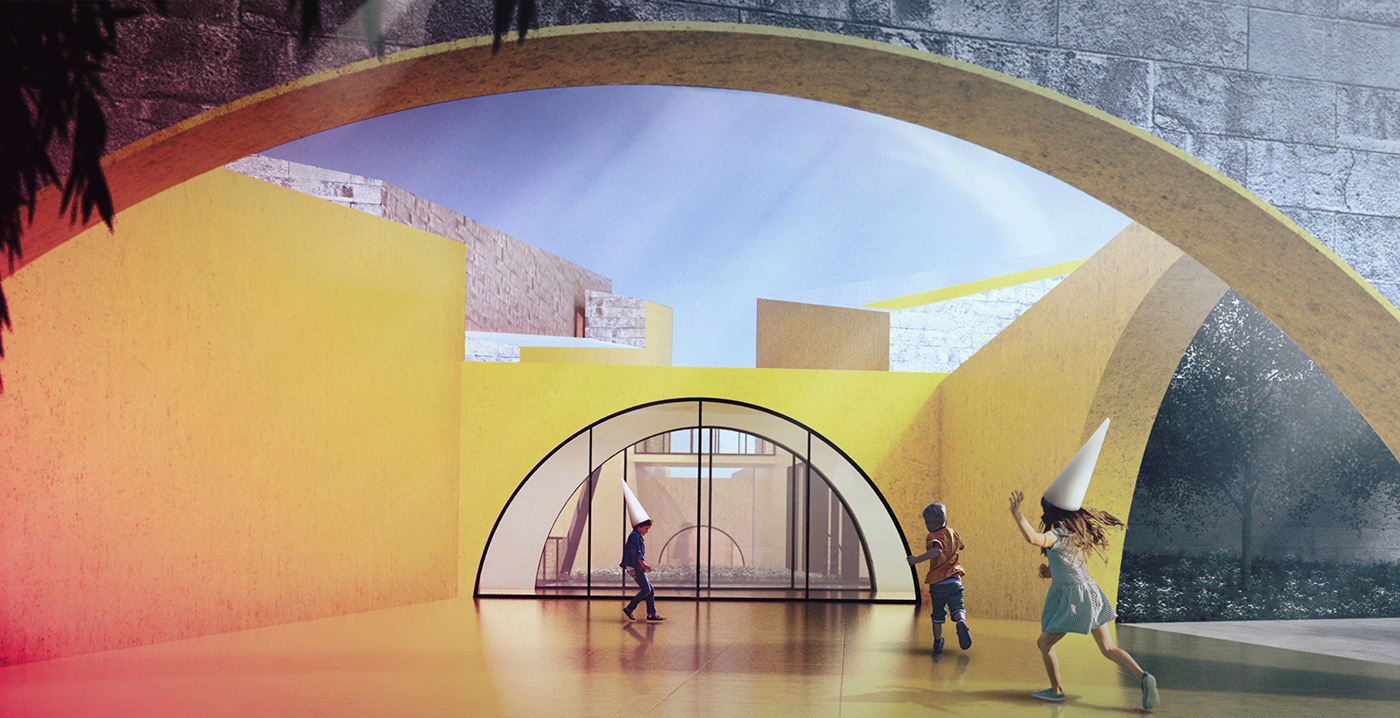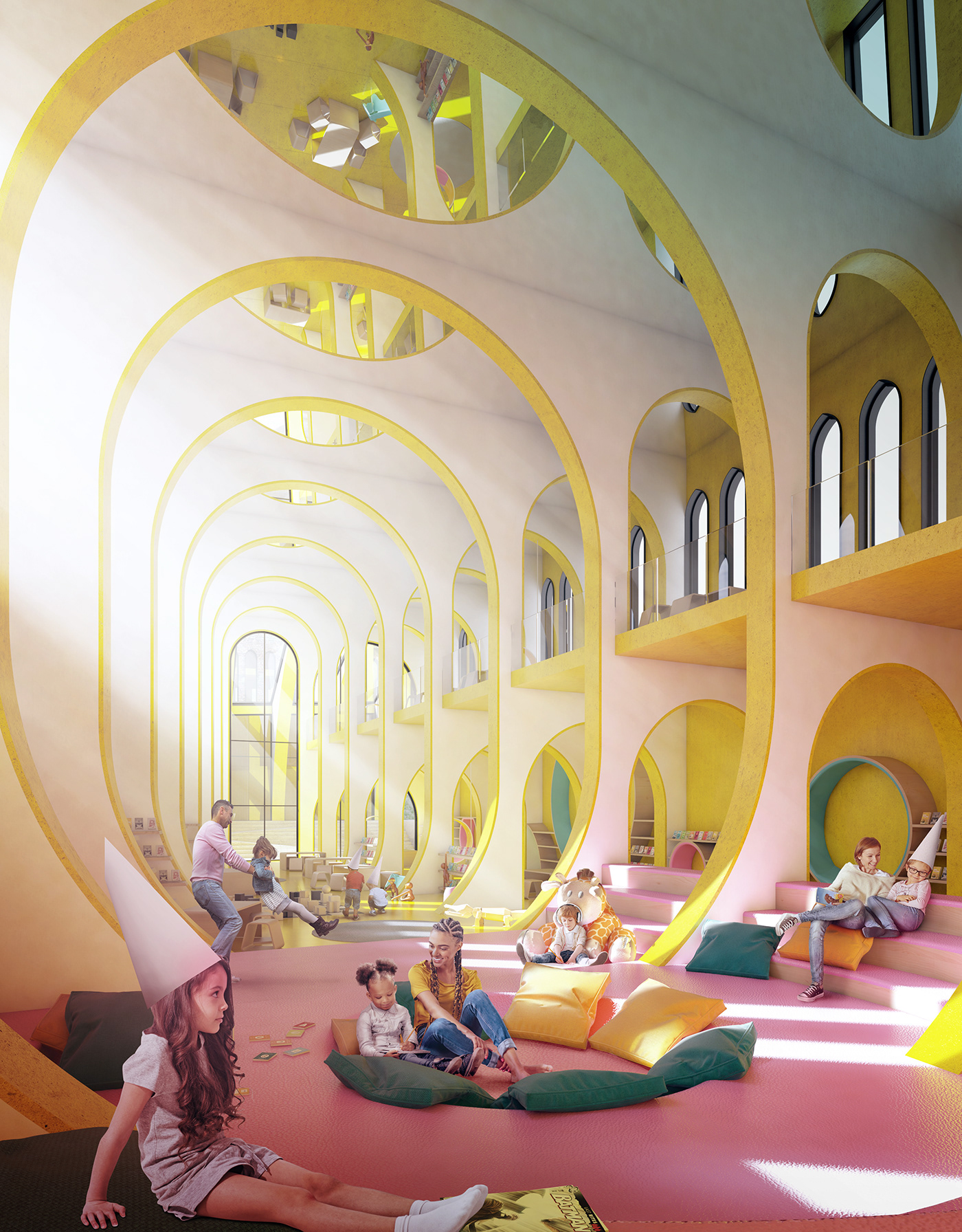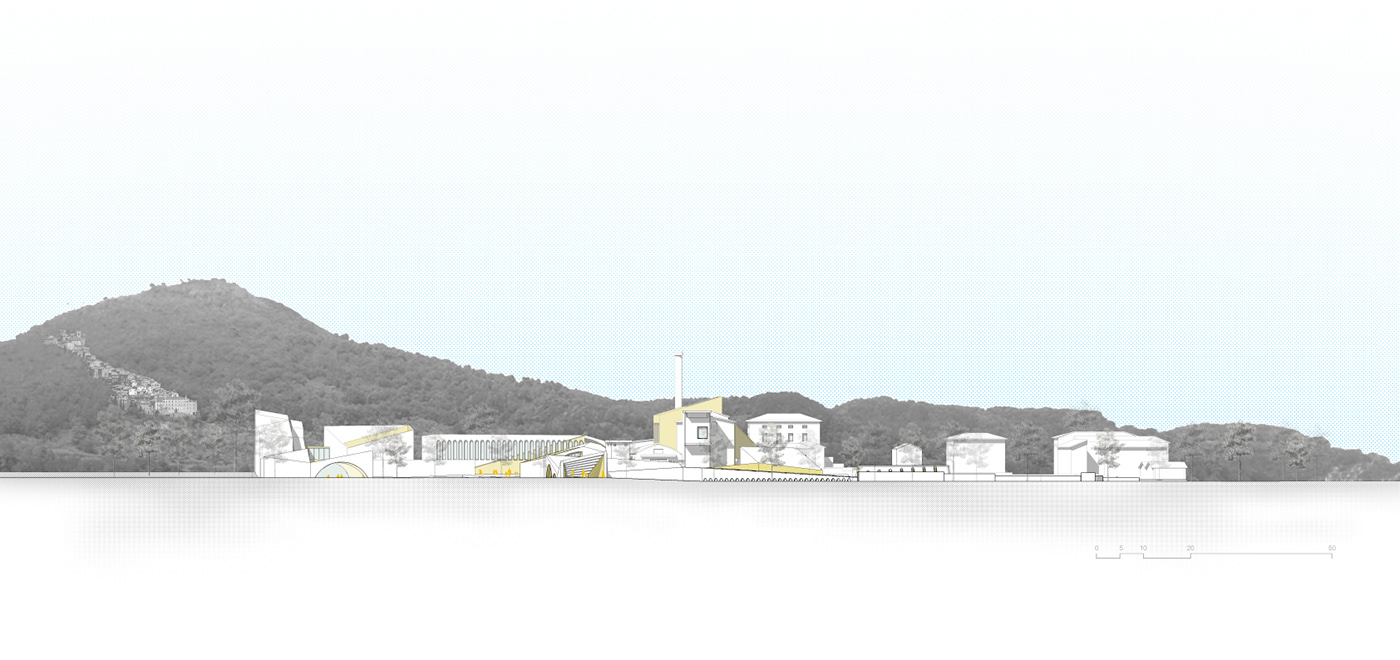
PINOCCHIO CHILDREN´S LIBRARY
Third Place - Young Architect´s Competitions
DEOC Arquitectos
Collodi, Italy
The magic that inspired Carlo Collodi to write The Adventures of Pinnochio is still well and alive in his hometown, Collodi. Our proposal finds its roots in that tangible magic, so characteristic of Tuscany and merges it with the future that has been envisioned for this beautiful town.
With this in mind, two factors define the genesis of the idea: the local physical character and landscape, and the translation of the magic evoked by literature into the material world.
The local physical character of the region is conceptualised in the project within six main aspects. The medieval footprint of the buildings, the interstitial spaces formed between those buildings, the framed views of these spaces and the landscape, the vernacular materiality, and the most important aspect for this proposal: the color.
While the first factor defines most of the formal look of the project, the second has more to do with the feeling and spirit of it. The main objective of this concept is to create a series of spaces that as a whole are able to blur the lines between reality and fantasy–the same way literature does–by creating architecture that is meant to be experienced and enjoyed. Taking advantage of fantasy-like qualities achieved by concepts of repetition, reflections, color, and light.
Pinocchio Children’s library will offer its visitors a unique project where concepts that seem to be opposite like interior and exterior, function and play, digital and analog merge into the program, resulting in various educational spaces for children and adults to develop their imagination.
The formal aesthetic of the complex derives from a child´s perspective of the world. The architecture is conveyed in an almost childlike representation of the existing elements in the town of Collodi. Pointed and semi circular arches, thick walls, and traditional pitched roofs result in a proposal that is both contemporary and deeply rooted in the local tradition.
La magia que inspiró a Carlo Collodi a escribir Las Aventuras de Pinocho se mantiene viva en su pueblo natal, Collodi. La propuesta encuentra su idea generadora en esta magia, tan característica de la Toscana, al mismo tiempo que se funde con el futuro que se ha concebido para este hermoso pueblo.
Con esto en mente, dos factores definen el origen del proyecto: El aspecto físico y natural del pueblo, y la traducción de la magia que evoca la literatura al mundo material.
El aspecto físico y natural del pueblo están conceptualizados en el proyecto a través de seis rasgos principales: La huella medieval de los edificios, el espacio intersticial entre ellos, las vistas enmarcadas de estos espacios, el paisaje, la materialidad vernácula y el más importante de todos: el color.
Mientras que el aspecto físico define la forma del proyecto, el aspecto literario y mágico define el espíritu y sensaciones dentro del proyecto. El principal objetivo del concepto es crear una serie de espacios que permitan desdibujar los límites entre realidad y fantasía, de la misma forma en que lo hace la literatura. Esto se consigue creando una arquitectura cuyo objetivo es ser experimentada y disfrutada. Se usaron conceptos como la repetición, la reflexión, el color y la luz para generar experiencias mágicas.
Este proyecto ofrecerá a los visitantes una propuesta única en donde conceptos que puedan parecer opuestos como interior y exterior, función y juego, digital y análogo, se combinan en el programa arquitectónico. Esto da como resultado espacios educativos, en donde tanto niños como adultos pueden aprender y desarrollar su imaginación.
La forma estética del complejo deriva de la perspectiva que poseen los niños del mundo. La arquitectura está representada de una forma casi infantil, tomando elementos arquitectónicos característicos del pueblo. Arcos de medio punto, muros gruesos, y techos inclinados resultan en una propuesta contemporánea pero al mismo tiempo asentada en lo local.






















